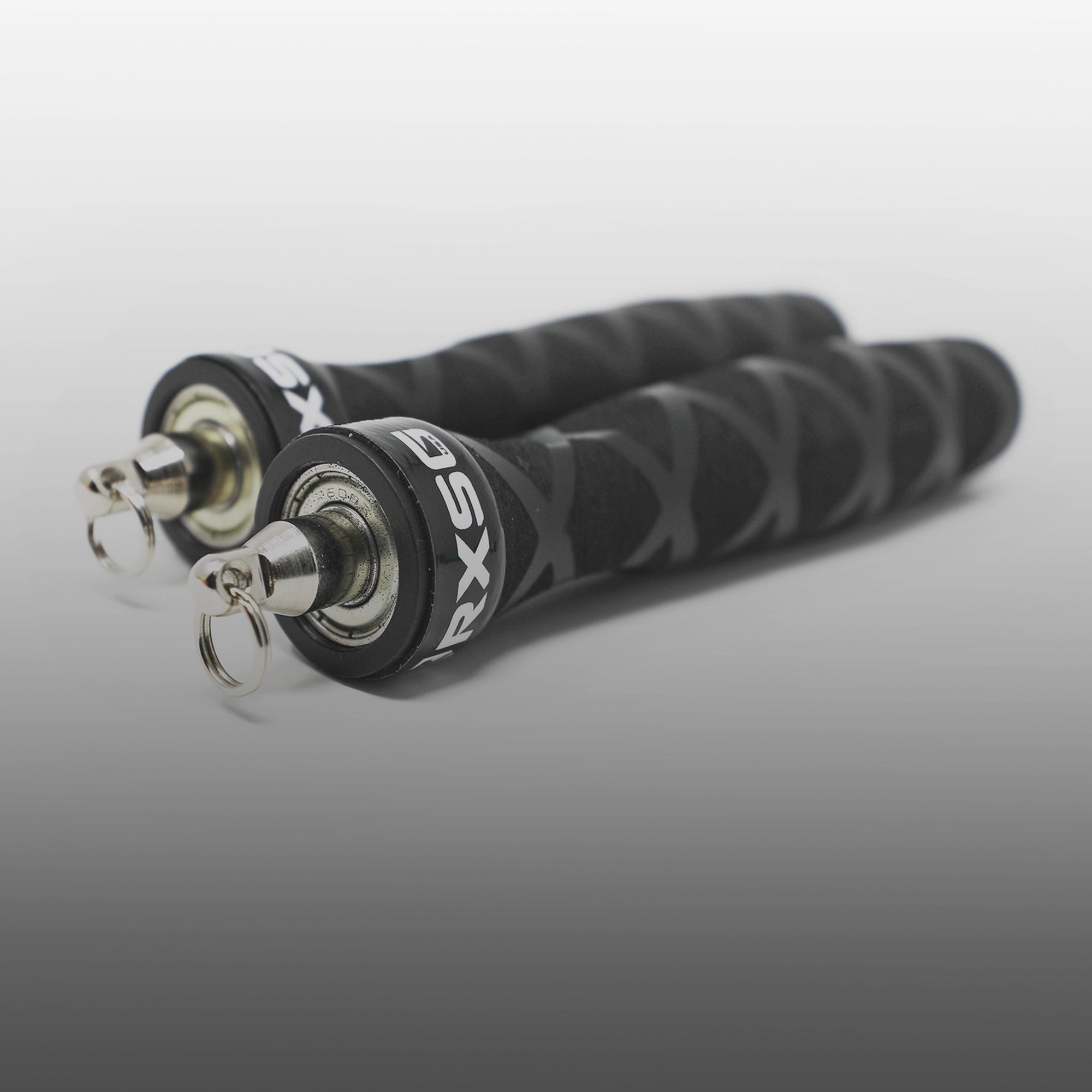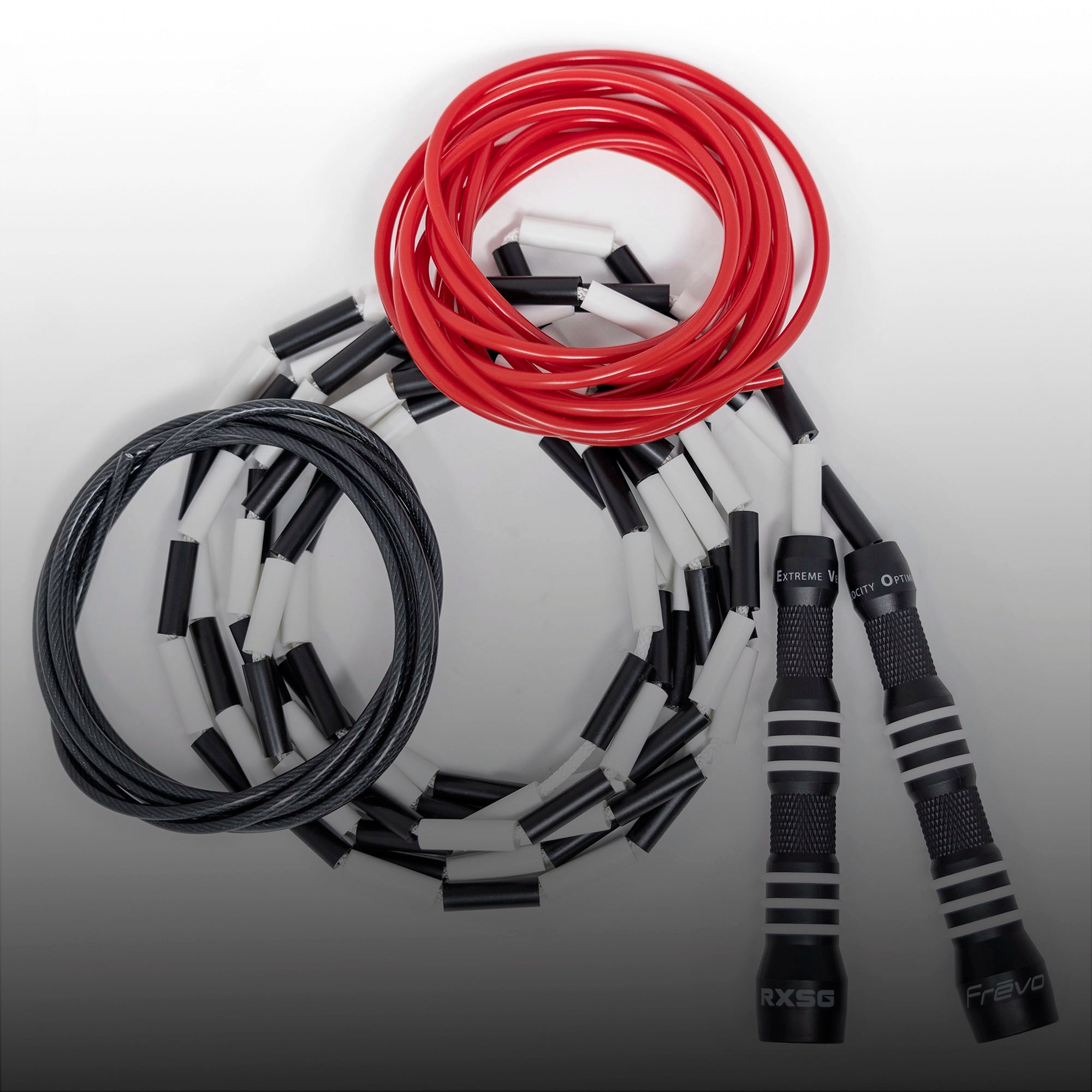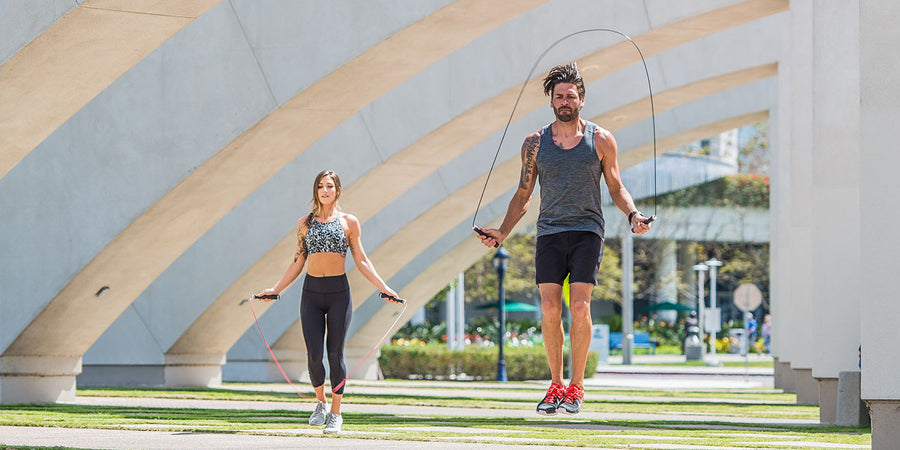Are you searching for a new cardio exercise to try out?
Perhaps you’ve been wondering about the differences between each cardio workout and which one is best suited to your needs. Whether you’re looking to lose weight or improve your cardiovascular health, cardio training is a convenient and flexible option.
In fact, jump rope is perhaps one of the most straightforward and popular forms of cardio. It can be done at home or in the gym, and it only requires one piece of equipment to get started. But how does jump rope compare to other forms of cardio? We’ll be exploring this question in this article to help you make an informed decision on which type of cardio exercise to choose.

What is a Jump Rope?
First, let’s start by explaining what a jump rope actually is.
Jump rope, also known as skipping rope, is a type of exercise that uses a rope that is swung in a circular motion over your head and then under your feet. Your goal is to simply jump over the rope–sounds simple enough, right? The speed and intensity of jumping rope comes from increasing the speed of your rotations. As you rotate your arms faster, you’ll be using more of your muscles and you’ll be jumping more often. This will get your heart rate going to bolster your cardiovascular strength and help you lose weight.
Jump rope can be done on your own at home, or you could join a class for it. Since there is some element of timing involved in jumping rope, many people enjoy listening to music in order to set the pace. There are also different variations of jump rope, such as crossing your hands or trying to rotate the rope so that it makes two rotations instead of one as you jump over it.
The material of the jump rope is usually lightweight nylon. There are handles on either side of the rope to make gripping easy. The lightweight rope cuts through the air quickly which allows for fast rotations, and the grips will prevent the jump rope from slipping out of your hands. You should be mindful of the length of the jump rope, as taller people might need a longer rope to accommodate their height. Similarly, shorter people may find it difficult to use a long jump rope as it’ll constantly slap against the floor. A good way to remedy this is to simply coil the rope around your wrist to shorten it, or to purchase a jump rope that can be adjusted.
Jump rope is often seen as a great way to improve coordination and cardiovascular endurance. It’s a great option to incorporate into any fitness routine but is especially good for improving your overall fitness and losing weight.
How Many Calories Does Jumping Rope Burn?
When it comes to cardio exercises, a big question on everyone’s mind is how many calories it burns. Since jumping rope engages many of your muscles and gets the heart pumping, it’s a surprisingly good way to burn excess calories.
However, as with any exercise, the number of calories it burns will depend on factors such as your body weight, how intense your jump rope session is, and how long you do it for. Your metabolism will also play a role in how many calories you burn while jumping rope.
On average, you can expect to burn around 15 to 20 calories each minute when jumping rope. However, you should take this number with a grain of salt as it can really change depending on your body weight and metabolism. These figures are for someone who weighs around 120 pounds (54.4 kg) so you can expect to burn even more if you weigh more.
The intensity is also a little difficult to gauge as you might be used to a fairly light workout which results in fewer calories burned. However, if you’re confident in your ability, then you can make jump rope a much more intense workout that will burn even more calories per minute.
What Are the Benefits of Jump Rope?
Jump rope offers numerous physical fitness benefits. Here are some of the biggest ones to keep in mind when choosing jump rope as your cardio workout of choice:
Improves your cardiovascular fitness:
Jumping rope is a fantastic aerobic exercise that will increase your heart rate. As your body gets accustomed to this, it’ll slowly start to improve your stamina, improve your lungs, and even strengthen your heart muscles. When combined, this leads to overall improvements in not just your cardiovascular fitness, but your health in general.
Offers a full-body workout:
Many people underestimate jumping rope as it’s often seen as a kid’s game. However, an intense session of jumping rope can engage multiple different muscle groups. You’ll be working your calves, quadriceps, hamstrings, and glutes. Moving up the body, you’ll also be engaging your core and even your shoulders and forearms when you rotate the jump rope. This makes it a fantastic comprehensive workout that will improve several different muscle groups.
Simple to add to your workouts:
Jumping rope is one of the best workouts to add to any session because it’s simple, easy, and doesn’t require much equipment or space. You can jump rope for a few minutes to cool down as a light exercise, or you can add it to a high-intensity routine. It’s a really flexible workout that takes minimal investment, yet can be personalized to your exact needs.
Helps with your coordination and balance:
Jumping rope requires a certain level of finesse to execute properly. Coordination and balance are extremely important when jumping rope and doing it on a regular basis can be a great way to improve these two traits. It requires a good deal of timing and sense of rhythm, and as you get faster it’ll improve your overall motor skills too.

It’s a portable exercise that you can do anywhere:
Jumping rope only requires a single piece of equipment and you can do it with hardly any space around you. This makes it a wonderful form of exercise for anyone that doesn’t have much space or wants to get a quick workout in when they’re traveling or even at work.
In short, there are loads of fantastic reasons to consider jumping rope. It’s a full-body workout that improves your muscles and cardiovascular health, can improve your coordination and balance, and it’s also a convenient portable workout that you can take wherever you go.
How Does Jump Rope Compare To Other Cardio Exercises?
Jumping rope is a fantastic cardio workout, but it’s not the only one available. Let’s see how it compares to the other types of cardio exercises that you can engage in. We’ll be comparing these exercises by how many calories they burn in roughly half an hour. For jumping rope, you can expect to burn 450 to 600 calories in half an hour at a moderately intense pace.
Cycling
Cycling is a fantastic cardio exercise that engages your hips, legs, and glutes. If you’re looking to strengthen your lower body, then cycling will be a great option. It’s also a flexible one because you can use cycling as a workout and method of transportation, or you could cycle at home or in the gym. If you use a cycling machine, then you can set the resistance and increase the intensity of your workout. However, some people find it easier to incorporate cycling into their workout routine by using it as a mode of transportation.
But while cycling is popular and improves your lower body strength, it does virtually nothing for your upper body since you don’t engage any of those upper muscles. Cycling burns an average of 200 to 350 calories in half an hour, making it less attractive from a calorie-burning perspective than jumping rope.

Running
Running is another convenient cardio workout because you can do it almost anywhere. You can run around your local area, or you can do it on a treadmill at home. It also doesn’t require any equipment, though you can certainly benefit from having a good pair of running shoes to reduce the impact on your feet. Much like jumping rope, it’s a cheap and accessible workout that you can add to your routine, assuming you’re not buying a treadmill!
However, it’s worth mentioning that running can be tough on your body, and the cheaper version of running isn’t really accessible to people that live in cities unless you are willing to run through sidewalks. Running involves striking the ground lots of times in rapid succession, so it’s fairly normal to feel a bit more pain when compared to jumping rope. In fact, many runners can suffer from injuries due to the exercise itself, but also due to the possibility of hitting someone or something when they’re running outside.
Running can burn anywhere from 300 to 500 calories in half an hour, meaning it burns less than jumping rope alone. However, many people enjoy mixing the two together, as it’s easy to transition from running to jumping rope immediately after.
Dancing
Dancing is a fun and exciting way to exercise. In fact, many people don’t even realize that they’re exercising once they get really into dancing. It’s an energetic way to lose weight, and you often engage many different types of muscles while keeping your heart rate up.
However, dancing can include a wide range of different moves and styles. Something simple and fast-paced like Salsa can burn upwards of 200 calories in just 30 minutes. However, something more intense like a pop dance routine could be upwards of 600 calories an hour. This is actually great news because it means you can adjust a dancing workout to your needs. If you want something slower to get started, then a simple and fun dance can get you going. However, you can always turn up the intensity by doing a street dance or even a swing dance with a partner.
Depending on the type of dance, you could burn from 200 to 600 calories in half an hour. This puts it on par with jump rope, but only if you’re doing an intense dance such as a pop or street dance routine.
Swimming
Swimming is another fun form of cardio that is surprisingly flexible. You can do many different kinds of swimming strokes, but you will need to be near a body of water or an indoor swimming pool in order for it to be an effective regular workout. You also have to consider that while swimming does look intense, you actually engage fewer muscles than you would be jumping rope. This is because you’re submerged in water, so it’s difficult to actually engage or use your muscles unless you’re swimming at a really fast pace.
Swimming burns around 250 calories in half an hour, meaning it’s a lot less than jumping rope. This is mainly because swimming is almost a zero-impact sport due to the weightlessness of being in a pool. With that said, you can increase the intensity to burn more calories, and it’s also a great option for people that experience pain with other cardio workouts.
This isn’t an exhaustive list of cardio workouts and you can always adjust them to be more or less intense. We recommend trying different kinds of cardio workouts to shake things up, especially if you’re getting bored of doing one form of cardio over and over.







Leave a comment
This site is protected by hCaptcha and the hCaptcha Privacy Policy and Terms of Service apply.